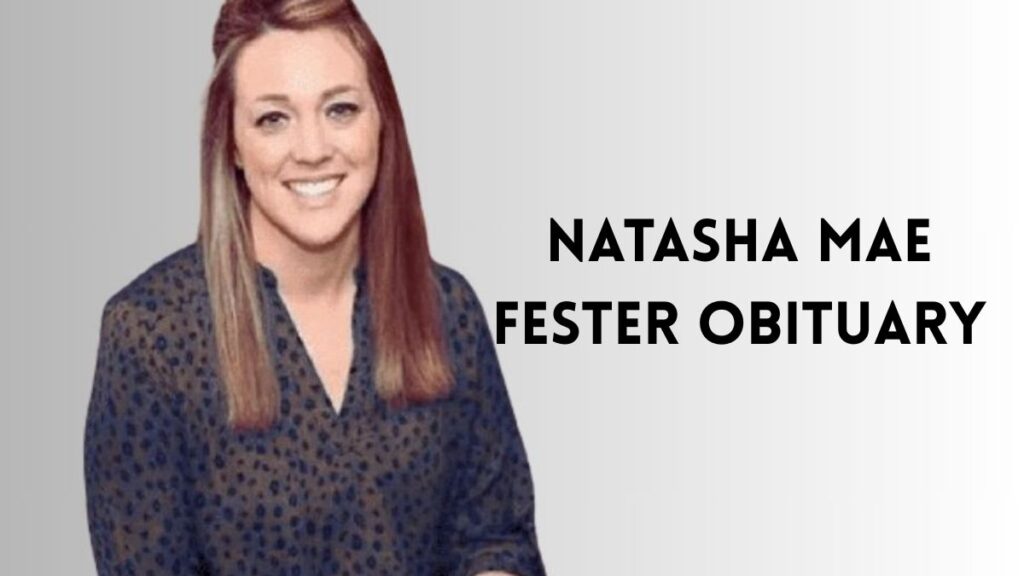When the world first met Natasha Mae Fester, it encountered a spirit too bright to ignore. Born on a crisp autumn morning in 1975, Natasha’s laughter echoed through the corridors of her childhood home in Charleston, South Carolina—a home that buzzed with the energy of her two younger brothers and the steady warmth of her mother’s cooking. From those earliest days, one thing was certain: Natasha Mae Fester would leave an indelible mark on everyone she met. Her life and legacy, captured in the Natasha Mae Fester obituary, serve as a testament to the unforgettable impact she had on those around her.
Early Years: Roots of Resilience
Natasha Mae Fester arrived into a world in flux. The mid-1970s in the American South were charged with cultural shifts—civil rights struggles still very fresh, new opportunities emerging for women, and communities rebuilding. Her parents, James and Lorraine Fester, were emblematic of the era’s hopeful grit. James, a high-school history teacher, spent evenings poring over textbooks so his students could glimpse a broader horizon. Lorraine, a nurse, dedicated her long shifts at the local hospital to comforting strangers, her bedside manner rooted in empathy and steel.
By age six, Natasha was already synthesizing her parents’ dual legacies of compassion and curiosity. She’d wheel her brother Andrew into mock “classroom” sessions in the living room, presenting finger-painted “maps” of ancient civilizations. By eight, she corrected her mother’s medical chart abbreviations, scribbling meticulously in her own notebook: “Always double-check vitals—life depends on details.” That precision foreshadowed a future career marked by both big-picture vision and meticulous execution.
The Formative Years: Discovering a Voice
High school at Charleston Academy of the Arts was where Natasha truly came alive. She discovered writing, channeling her quicksilver wit and keen observations into the school newspaper, The Seahawk Gazette. Under the byline “T. Fester,” she penned razor-sharp commentary on teenage life, local politics, and the quirks of small-town celebrity. Her favorite tract, “The Ghost of the Old Oak Gym,” paired historical research with lyrical storytelling—an early sign of her unique voice.
But it wasn’t all ink and paper. On weekends, Natasha coached youth soccer, teaching girls the same mantra her father taught her: “Play smart, play fearless.” She thrived on mentorship, celebrating every budding talent. Her laughter on the sidelines—encouraging, fierce—became legend in Charleston’s parks.
College and Awakening: Charting a Course
In 1993, Natasha Mae Fester matriculated at the University of North Carolina at Chapel Hill, a decision driven by both ambition and wanderlust. There she majored in Journalism and Communications, determined to refine her gift for storytelling. Chapel Hill dazzled her with thought-provoking seminars and spirited debates on race, gender, and the responsibility of the fourth estate.
Her college years were defined by restless energy. By sophomore year, she was Editor-in-Chief of The Daily Tar Heel, steering the paper through coverage of the Oklahoma City bombing, campus free speech protests, and the early days of the internet. Her hallmark approach? A blend of incisive analysis and humanizing profiles. In one unforgettable series, she chronicled the lives of UNC janitorial staff—“Invisible Hands, Indispensable Hearts”—shedding light on stories often overlooked.
Beyond the newsroom, Natasha immersed herself in campus life. She co-founded Carolina Women of Tomorrow (CWT), a mentorship program pairing college women with local high-school girls. Late-night brainstorming sessions in campus cafés fueled her dream: to create spaces where young women could harness their voices.
Launching a Career: The Rise of a Storyteller
Graduating cum laude in 1997, Natasha Mae Fester set her sights on New York City, the journalistic epicenter. Armed with a portfolio that crackled with ambition, she landed a junior role at Metro Pulse Weekly, a city magazine hungry for fresh angles.
In the kaleidoscopic world of NYC media, Natasha thrived. She chased features on graffiti artists who transformed derelict walls into urban cathedrals, profiled grassroots activists rewriting welfare narratives, and peeled back the curtain on business titans with quietly radical philanthropic agendas. Her writing was lean—no adjective wasted—and always alive with empathy.
A breakthrough came in 2002 with her cover story, “Steel Roses: Women Reframing Wall Street.” Natasha spent six months embedded at a boutique investment firm led by accomplished female traders. The piece exposed the obstacles women faced in finance—from subtle biases at boardroom tables to outright harassment—and celebrated their tenacity. It won the National Press Club’s Feature Writing Award, announcing her arrival as a journalist who could both challenge the status quo and celebrate humanity’s victories.
Beyond Journalism: Catalyst for Change
Success bred opportunity. In 2004, Natasha Mae launched Illuminate Media, a digital platform dedicated to long-form narratives on social justice, art, and culture. Illuminate’s tagline—“Stories That Illuminate Us”—captured her vision: journalism that elevated overlooked voices and sparked dialogue.
Under her stewardship, Illuminate produced acclaimed series like “Invisible Work,” spotlighting caregivers and domestic laborers, and “Frontlines of Climate,” pairing photojournalists with climate scientists to humanize environmental crises. Natasha insisted on collaborative storytelling: writers, photographers, and subject-matter experts working side by side.
Illuminate’s editorial ethos was rooted in mentorship. Each year, Natasha selected ten interns from diverse backgrounds, offering them stipends, bylines, and hands-on mentorship. Alumnae of the program have gone on to run major newsrooms, proving that Natasha’s legacy wasn’t confined to her own byline—it radiated outward through every journalist she nurtured.
Personal Life: The Heart Behind the Hustle
Despite her whirlwind career, Natasha Mae Fester prioritized relationships. In 2005, she married childhood friend and civil-rights lawyer Marcus Reyes. Their partnership was built on mutual respect and shared purpose: Marcus fighting for systemic reform in courtrooms, Natasha challenging the court of public opinion through words.
They welcomed two children—Amara in 2007 and Noah in 2010. Natasha balanced deadlines with diaper changes, evening debriefs with soccer practices. She wrote an unvarnished essay, “Motherhood in Headlines,” exploring the tension between professional drive and maternal devotion. Readers from New York to Nairobi connected deeply with her honesty.
Friends remember her as a force of nature: the woman who’d commandeer a kitchen to bake muffins for neighborhood potlucks, the one who’d text a struggling mentee at midnight with pep talks, the friend who built enduring chosen families out of strangers.
Triumphs and Trials: A Life Unflinchingly Lived
Not every chapter was smooth. In 2012, Natasha faced a grave health scare: a rare autoimmune disorder that left her bedridden for months. Initially branded a “journalistic workhorse,” she grappled with vulnerability. “You know how to tell others’ stories,” her physicians noted. “Now learn to hear your own body’s.”
That period reshaped Natasha’s worldview. She slowed down, embraced mindfulness, and penned The Body in Words, a memoir weaving health struggles with explorations of identity. Released in 2014, the book soared to bestseller lists and sparked conversations about wellness within demanding careers. True to form, Natasha donated half her royalties to patient advocacy groups.
Her return to journalism felt triumphant. She covered the frontlines of refugee crises, authored investigative exposés on digital surveillance, and directed a documentary on indigenous land rights. Each project carried her hallmark empathy—seeing people not as data points, but as complex souls navigating adversity.
The Final Chapter: Natasha Mae Fester Obituary
On March 22, 2025, Natasha Mae Fester passed away peacefully at her home in Brooklyn Heights, surrounded by family. She was 49 years old. In the weeks leading up to her death, she was working on her next Illuminate project: a collaboration with photojournalists and climate activists in the Pacific Islands. Even in frailty, her mind chased stories; her heart sought justice.
News of her passing rippled across media outlets. Colleagues recalled her editorial steadfastness—Natasha would demand nuance when others settled for soundbites. Mentors she’d once revered sent condolences; mentees she’d launched sent tear-filled messages. The phrase “Natasha Mae Fester obituary” trended not as clickbait, but as a genuine communal moment of reflection.
In remembering Natasha Mae, we confront the very qualities she celebrated in her work: courage, compassion, and curiosity. Obituaries can feel perfunctory—a recitation of dates and deeds—but her life story demands more. It demands acknowledgment of how one person’s dedication to truth and humanity can ripple outward, altering countless lives.
Legacy: The Spark That Endures
So what remains when the bylines fade and the headlines shift? Natasha Mae Fester obituary is like a constellation—each star a story she told, each connection a spark she ignited. Illuminate Media continues to flourish under the guidance of her alumnae, carrying forward her mission to amplify marginalized voices. The CWT mentorship program she founded boasts chapters nationwide, guiding young women into spheres once closed to them.
Her published works—articles, essays, the memoir—still catalyze dialogue in universities, newsrooms, and living rooms. They remind us that journalism is not a mere career, but a covenant: to listen before speaking, to empathize before judging, and to write with both heart and rigor.
On the personal front, her children, now 18 and 15, carry forward her inquisitive spirit. Amara plans to study environmental science, inspired by her mother’s climate reporting; Noah is building his first camera drone, eager to document social movements the way Natasha did. Marcus continues his legal advocacy, fortified by the life partner who once used words as weapons for justice.
Community gardens in Charleston still bear signs dedicated to the Fester family—testaments to Lorraine’s nurturing touch, James’s intellectual mentorship, and Natasha’s irrepressible energy. At each local park, coaches invoke “Coach Fester’s” mantra: “Play smart, play fearless,” reminding budding athletes that success is as much about mindset as skill.
Conclusion: A Beacon That Guides
An obituary often closes the book on a life; in Natasha’s case, it opens new volumes. Her story demonstrates how biography can transcend chronology—becoming a blueprint for courage, creativity, and committed living.
To search “natasha mae fester obituary” today is to embark on a journey through resilience forged in southern kitchens, editorial battles fought in bustling newsrooms, and quiet victories won in the pages of personal essays. It is to witness a life lived with bold strokes and fine detail, a life that reminds us why storytelling matters.
Natasha Mae Fester taught us that every voice—no matter how silenced—deserves to be heard. She proved that a single story, told with honesty and warmth, can reshape how we see the world and each other. Though she has departed this stage, her narrative persists, guiding writers, activists, and dreamers forward. In every word we write, in every truth we share, the spark of Natasha Mae Fester’s life endures.






